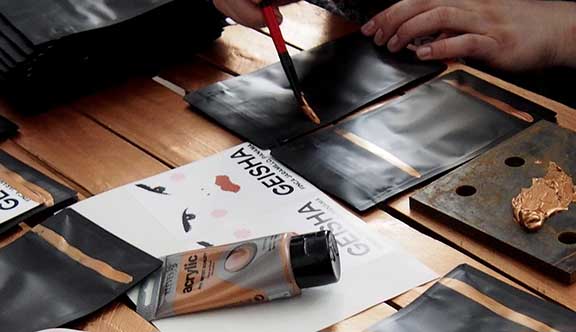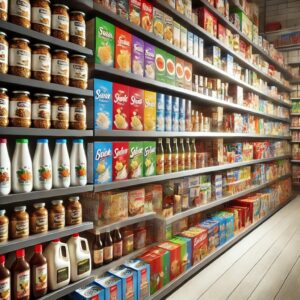Packaging Designs and Packaging Strategy for 2025: The Future of Branding and Sustainability
As we approach 2025, the packaging industry is undergoing a transformative shift. Brands are no longer just focusing on aesthetics and functionality; they are rethinking their packaging designs and strategies to align with evolving consumer preferences, technological advancements, and environmental responsibilities. In this blog post, we’ll explore the key trends and strategies that will define packaging in 2025, offering insights for businesses to stay ahead of the curve.
Sustainability Takes Center Stage
By 2025, sustainability will no longer be a buzzword but a non-negotiable aspect of packaging design. Consumers are increasingly demanding eco-friendly solutions, and brands must respond by adopting sustainable materials and practices.
- Biodegradable and Compostable Materials: Packaging made from plant-based materials, such as cornstarch, mushroom mycelium, and seaweed, will gain traction. These materials decompose naturally, reducing landfill waste.
- Reusable Packaging: Brands will invest in designs that encourage reuse, such as refillable containers or multi-purpose packaging. This not only reduces waste but also fosters customer loyalty.
- Minimalist Design: Less is more. Streamlined packaging with fewer layers and materials will become the norm, reducing carbon footprints and production costs.
Smart Packaging and Technology Integration
The rise of the Internet of Things (IoT) and smart technology will revolutionize packaging in 2025. Smart packaging will enhance user experience, improve supply chain efficiency, and provide valuable data to brands.
- QR Codes and NFC Tags: These technologies will enable consumers to access product information, track origins, and even reorder items with a simple scan.
- Temperature-Sensitive Packaging: For industries like food and pharmaceuticals, smart packaging that monitors temperature and freshness will ensure product safety and quality.
- Augmented Reality (AR): AR-enabled packaging will create immersive brand experiences, allowing customers to interact with products in innovative ways.

Personalization and Customization
In 2025, consumers will expect packaging that speaks directly to them. Personalization will be a key differentiator for brands looking to stand out in a crowded market.
- Variable Data Printing: Advanced printing technologies will allow brands to create unique packaging for individual customers, incorporating names, messages, or tailored designs.
- Limited Edition Packaging: Exclusive designs for special occasions or collaborations will drive consumer excitement and boost sales.
- Interactive Elements: Packaging that engages consumers through puzzles, games, or storytelling will create memorable brand experiences.
E-Commerce-Optimized Packaging
With the continued growth of online shopping, packaging designs in 2025 will prioritize e-commerce functionality. Brands must ensure their packaging is durable, lightweight, and cost-effective for shipping.
- Right-Sized Packaging: Custom-fit designs that minimize empty space will reduce shipping costs and environmental impact.
- Tear-Resistant Materials: Packaging that withstands the rigors of transit will enhance customer satisfaction and reduce returns.
- Unboxing Experience: Brands will focus on creating a memorable unboxing experience, using premium materials and thoughtful design to delight customers.
Regulatory Compliance and Transparency
As governments worldwide implement stricter packaging regulations, brands must stay informed and compliant. Transparency will be key to building trust with consumers.
- Clear Labeling: Packaging will need to display detailed information about materials, recyclability, and environmental impact.
- Carbon Footprint Tracking: Brands may include carbon footprint data on packaging, showcasing their commitment to sustainability.
- Global Standards: Companies operating internationally will need to adapt their packaging to meet diverse regulatory requirements.
Bold and Inclusive Branding
In 2025, packaging design will reflect the values of inclusivity and diversity. Brands will use packaging as a platform to connect with a global audience.
- Cultural Sensitivity: Designs will incorporate elements that resonate with diverse cultures and communities.
- Gender-Neutral Packaging: Moving away from traditional gender stereotypes, brands will adopt neutral designs that appeal to all consumers.
- Bold Visuals: Vibrant colors, unique typography, and eye-catching graphics will dominate shelves, capturing consumer attention in seconds.
Monetization Opportunities in Packaging
For businesses, innovative packaging strategies offer numerous monetization opportunities:
- Premium Pricing: Eco-friendly and personalized packaging can justify higher price points.
- Subscription Models: Reusable and refillable packaging can be integrated into subscription services, creating recurring revenue streams.
- Brand Collaborations: Limited edition packaging can attract partnerships with other brands, driving cross-promotion and sales.
The packaging landscape in 2025 will be defined by sustainability, technology, personalization, and inclusivity. Brands that embrace these trends and adapt their strategies will not only meet consumer expectations but also unlock new revenue streams. By investing in innovative packaging designs and staying ahead of regulatory changes, businesses can position themselves as leaders in their industries. The future of packaging is here—don’t get left behind.


